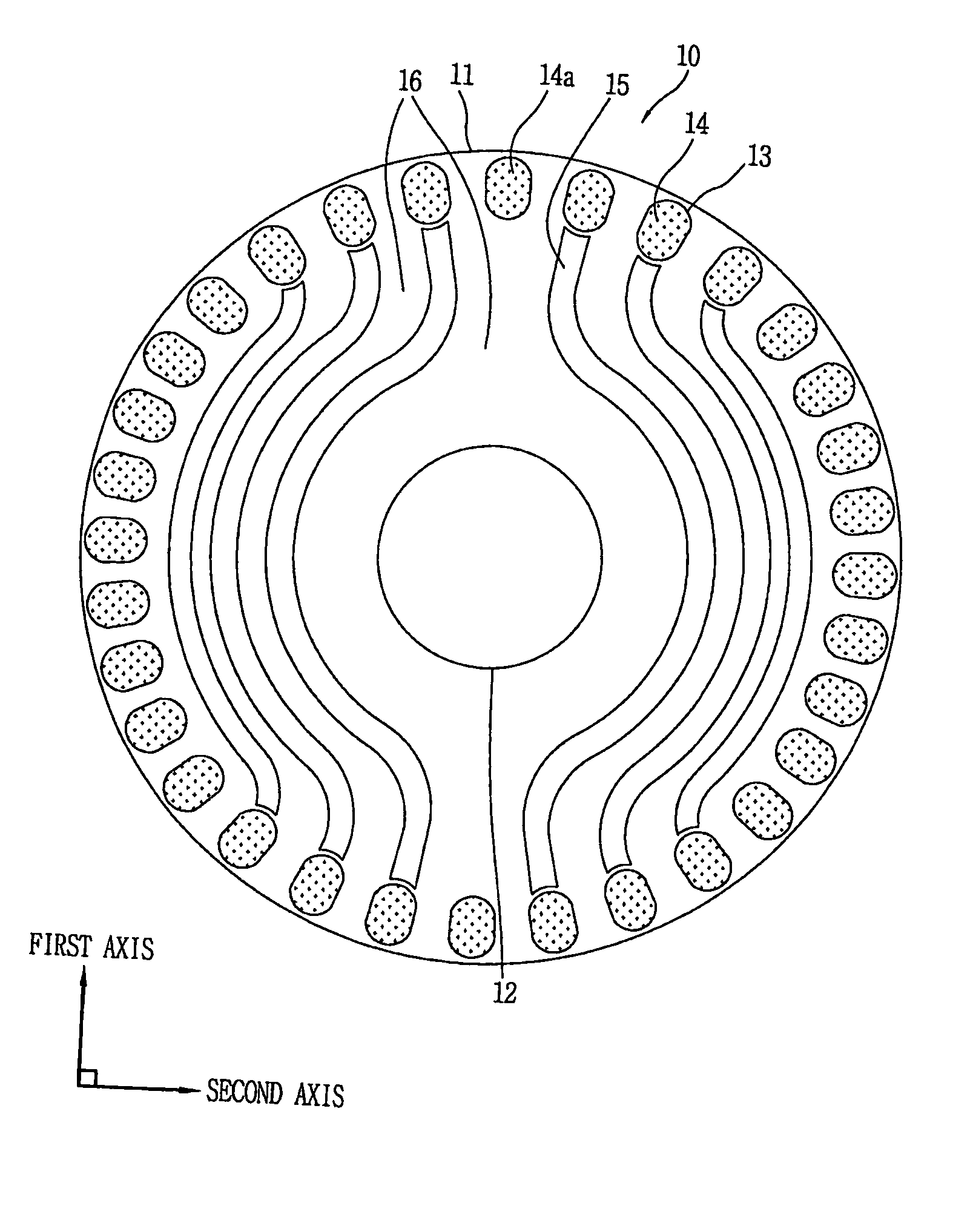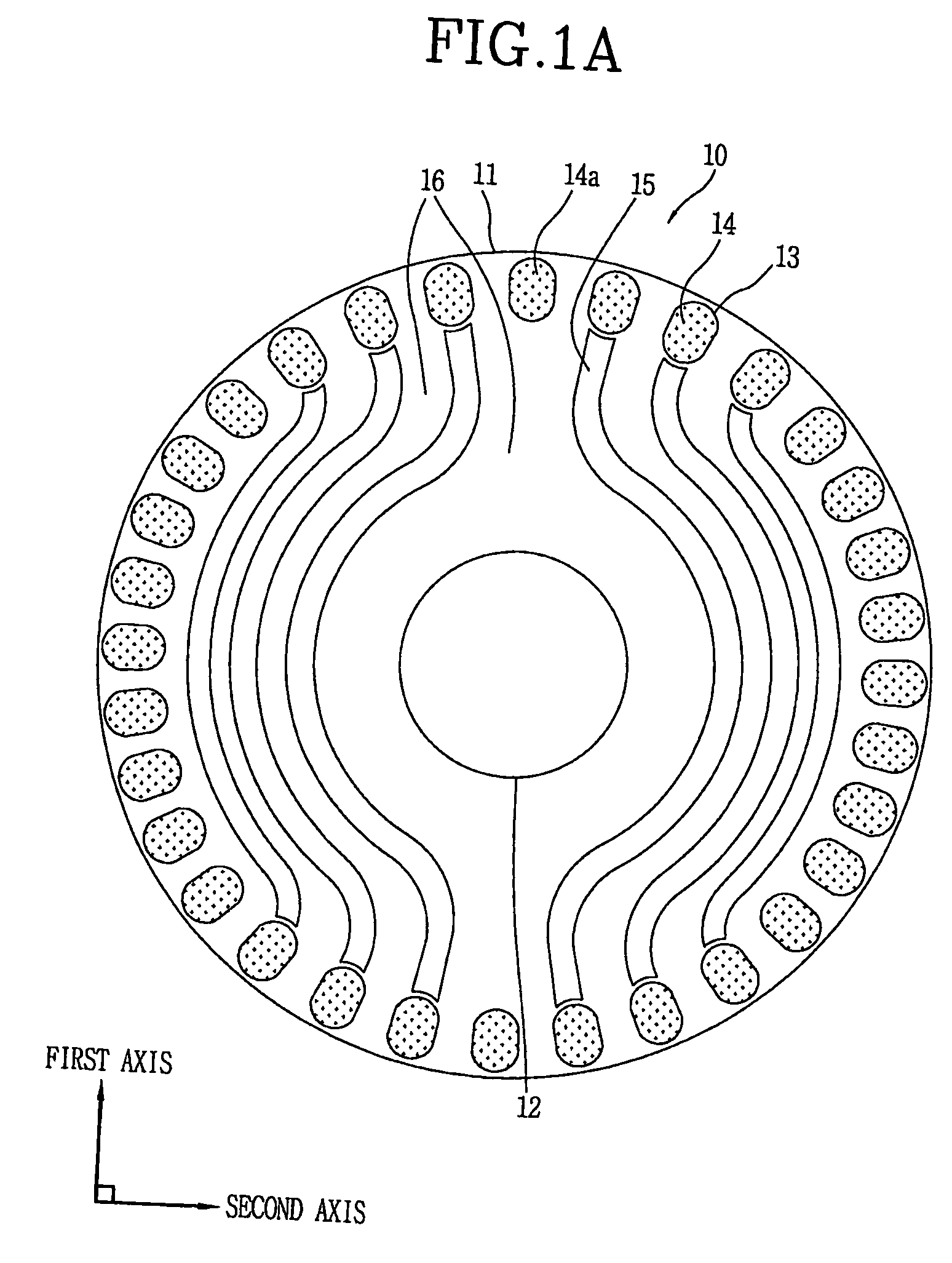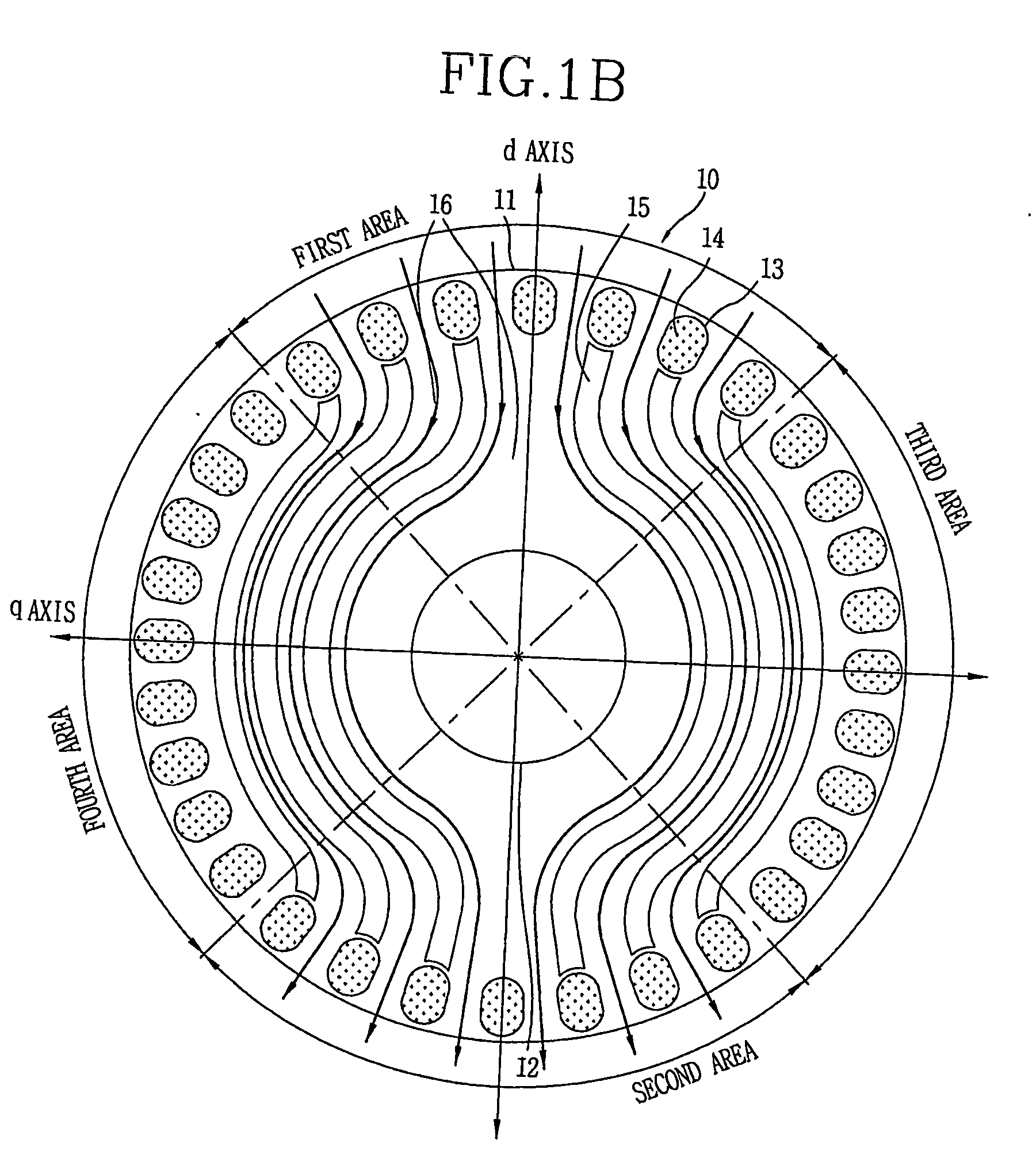Rotor for line-start reluctance motor
- Summary
- Abstract
- Description
- Claims
- Application Information
AI Technical Summary
Benefits of technology
Problems solved by technology
Method used
Image
Examples
first embodiment
[0046]FIGS. 1A and 1B are plane views illustrating a rotor for a line-start reluctance motor in accordance with the present invention.
[0047] Referring to FIG. 1A, a rotor 10 includes a core 11 having an axis coupling hole 12 formed in a coupling direction of a shaft (not shown). The core 11 includes a plurality of bar insertion holes 13 in its periphery, and a plurality of bars 14 are inserted into the bar insertion holes 13. In addition, the core 11 has a plurality of flux barriers 15 extending toward a first axis vertical to the coupling direction of the shaft (hereinafter, referred to as ‘coupling direction’), and being symmetric to each other on a second axis vertical to the first axis. Parts of the core 11 between the plurality of flux barriers 15 which flux flows through are flux paths 16.
[0048] In detail, the rotor 10 is comprised of a plurality of stacked core planes, and the core 11 does not require special magnetic materials.
[0049] The bars 14 are inserted into the bar i...
second embodiment
[0062]FIGS. 2A and 2B are plane views illustrating a rotor for a line-start reluctance motor in accordance with the present invention. The rotor 20 of FIG. 2A has the aforementioned properties of the rotor 10 of FIG. 1A, and also has additional properties described below.
[0063] As shown in FIG. 2A, flux enters the rotor 20 in the d axis direction and flows through flux paths 26, but rarely flows in the q axis direction. The detailed explanation of the rotor 20 will later be explained with reference to FIG. 2B.
[0064] Still referring to FIG. 2A, as identical to the rotor 10 of FIG. 1A, the rotor 20 is divided into first and second areas facing each other at a predetermined angle α on a central line of d axis on a core plane vertical to a coupling direction, and also be divided into third and fourth areas between the first and second areas. In consideration of a start force of the rotor 20, the angle α is preferably 100 to 110°, more preferably, 104 .
[0065] The rotor 20 is provided w...
third embodiment
[0072]FIG. 3 is a plane view illustrating a rotor for a line-start reluctance motor in accordance with the present invention. The rotor 30 of FIG. 3 has the whole properties of the rotor 10 of FIG. 1A and some properties of the rotor 20 of FIG. 2 (for example, except the flux barrier 25a), and also has additional properties.
[0073] In detail, in a core 31 of the rotor 30, bars 34 in third and fourth areas are installed in flux barriers 35a. That is, the flux barriers 35a are formed between the bars 34 in the third and fourth areas. Flux entering between the bars 34 do not flow into the core 31 due to the flux barriers 35a. Therefore, a difference between flux density on d axis and flux density on q axis considerably increases.
PUM
 Login to View More
Login to View More Abstract
Description
Claims
Application Information
 Login to View More
Login to View More - R&D
- Intellectual Property
- Life Sciences
- Materials
- Tech Scout
- Unparalleled Data Quality
- Higher Quality Content
- 60% Fewer Hallucinations
Browse by: Latest US Patents, China's latest patents, Technical Efficacy Thesaurus, Application Domain, Technology Topic, Popular Technical Reports.
© 2025 PatSnap. All rights reserved.Legal|Privacy policy|Modern Slavery Act Transparency Statement|Sitemap|About US| Contact US: help@patsnap.com



